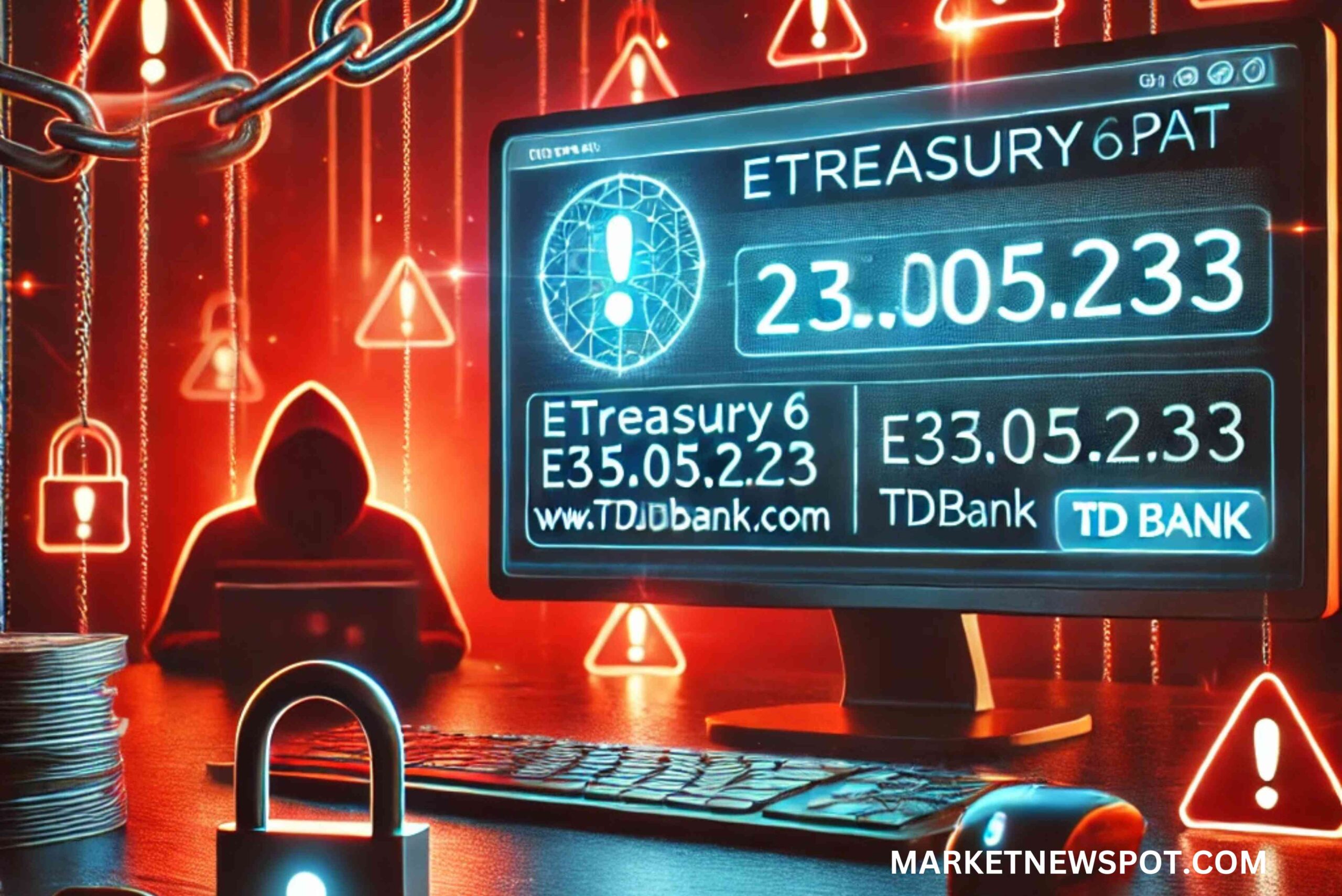Introduction To 23.50.52.33 etreasury6.pat.tdbank.com
Online banking has made life easier, but it has also opened doors to cybersecurity threats. Ever wondered if the banking site you’re using is truly safe? What about URLs like 23.50.52.33 etreasury6.pat.tdbank.com—should you trust them? In this guide, we’ll uncover the truth about online banking security and help you stay protected.
Understanding Online Banking Security
Though it’s handy, online banking carries certain hazards.Banks invest heavily in security, but cybercriminals are always looking for loopholes. Understanding how banks protect your data is the first step in keeping your money safe.
What is 23.50.52.33 etreasury6.pat.tdbank.com?
This web address seems official, but should you trust it? Let’s break it down:
- 23.50.52.33 – This is an IP address, not a standard bank domain.
- tdbank.com This looks to be a subdomain of TD Bank Treasury offerings.
- Legit or Scam? – While it might belong to TD Bank, always verify before using it.
How Secure Are Bank Websites?
Banks use SSL encryption, firewalls, and multi-factor authentication to secure websites. But even the most secure sites can be targeted by cybercriminals. Always check for “https://” and a padlock symbol before logging in.
Common Cyber Threats in Online Banking
- Phishing Scams – Fake emails tricking you into revealing login details.
- Malware – Viruses that steal banking credentials.
- Man-in-the-Middle Attacks – Hackers intercept communication between you and the bank.
How Hackers Exploit Banking Vulnerabilities
Hackers use:
- Fake banking websites that mimic real ones.
- Keyloggers to record your keystrokes.
- Credential stuffing to use stolen passwords from other breaches.
How to Verify a Legitimate Banking URL
- Check the domain – Does it match your bank’s official website?
- Avoid clicking links in emails – Type the URL manually.
- Use WHOIS lookup – Check who owns the domain.
Steps to Keep Your Online Banking Safe
- Use strong passwords – A mix of letters, numbers, and symbols.
- Turn on two-factor authentication to provide still another degree of security.
- Beware of public Wi-Fi – Use a VPN when banking online.
Two-Factor Authentication: Is It Enough?

2FA is helpful but not foolproof. Cybercriminals use:
- SIM swapping to hijack phone numbers.
- Fake 2FA prompts to steal authentication codes.
Recognizing Phishing Scams
Phishing emails often:
- Look urgent – “Your account has been compromised!”
- Have spelling errors – Professional banks don’t make typos.
- Ask for sensitive info – Banks never request passwords via email.
What to Do If You Suspect Fraud?
- Contact your bank immediately.
- Freeze your account if necessary.
- Report phishing attempts to authorities.
The Future of Online Banking Security
Banks are improving security through:
- Biometric authentication (fingerprints, face scans).
- AI-based fraud detection.
- Blockchain technology for secure transactions.
Final Thoughts
Cybersecurity threats are real, but you can stay safe by following best practices. Always verify URLs, enable security features, and remain cautious. The more aware you are, the harder it is for hackers to succeed.
FAQs
- Is 23.50.52.33 etreasury6.pat.tdbank.com safe to use?
While it appears to be a TD Bank-related domain, always verify with the bank directly before using it.
- How can I tell if an online banking site is fake?
Check the URL, look for “https://”, avoid links in emails, and contact your bank if unsure.
- Online banking is safest done in what manner?
Use strong passwords, enable 2FA, avoid public Wi-Fi, and regularly check your account for unauthorized transactions.
- Can banks refund stolen money from cyber fraud?
Most banks offer fraud protection, but reimbursement depends on how quickly you report the issue.
- What’s the best way to protect my banking credentials?
Turn on multi-factor authentication, routinely update passwords using a password manager.


